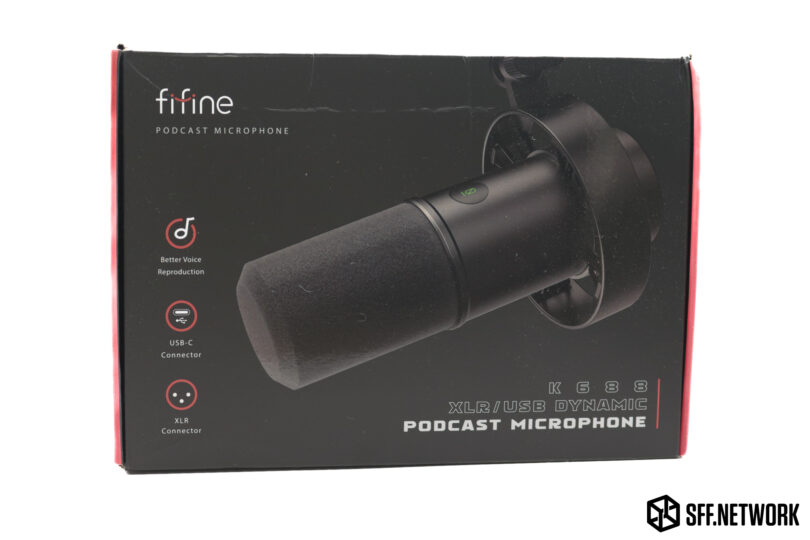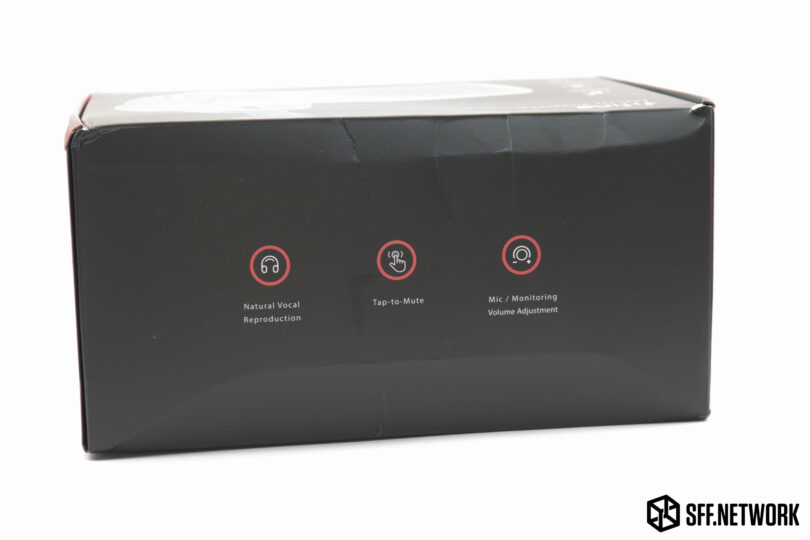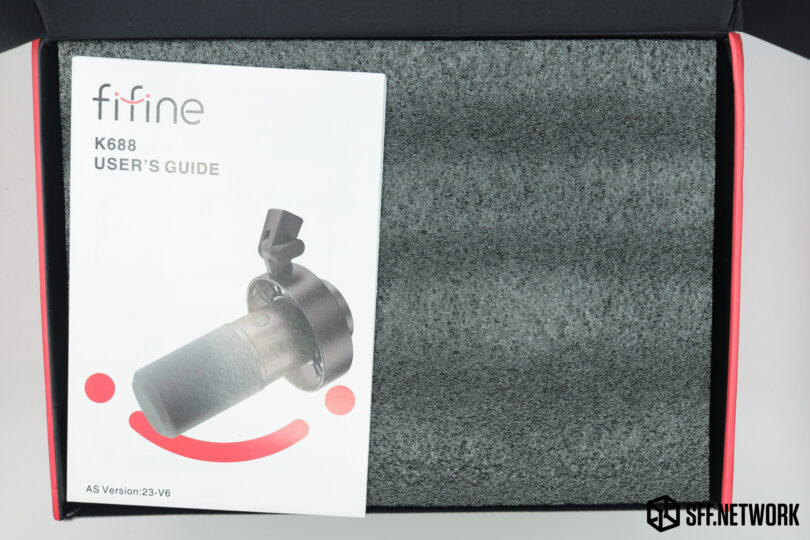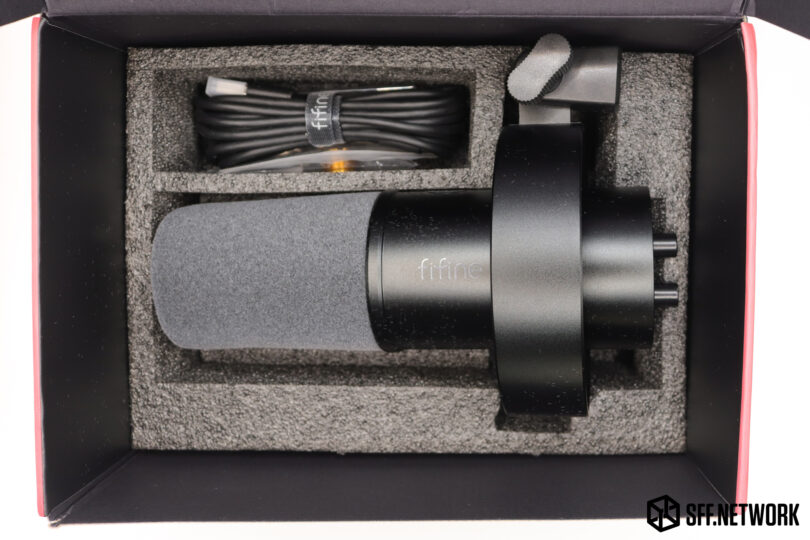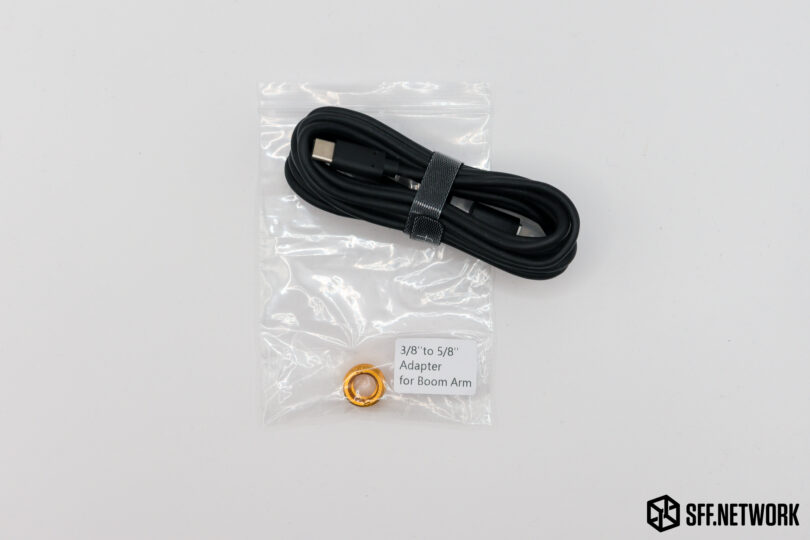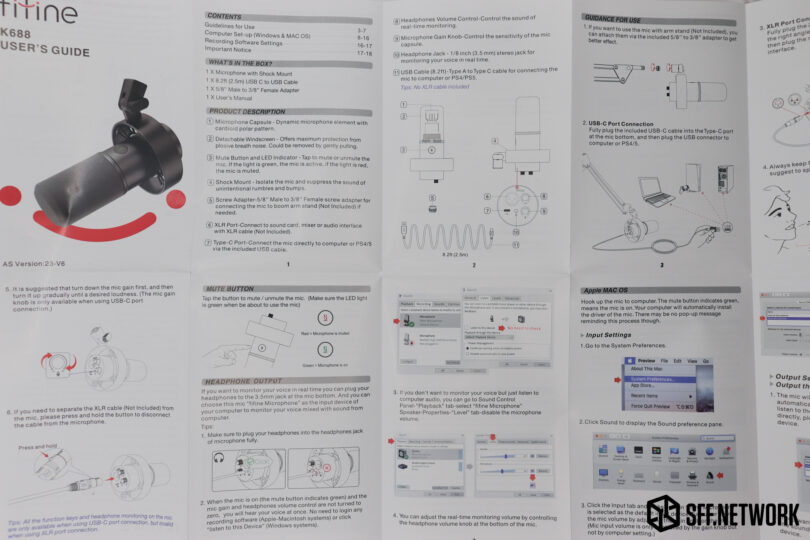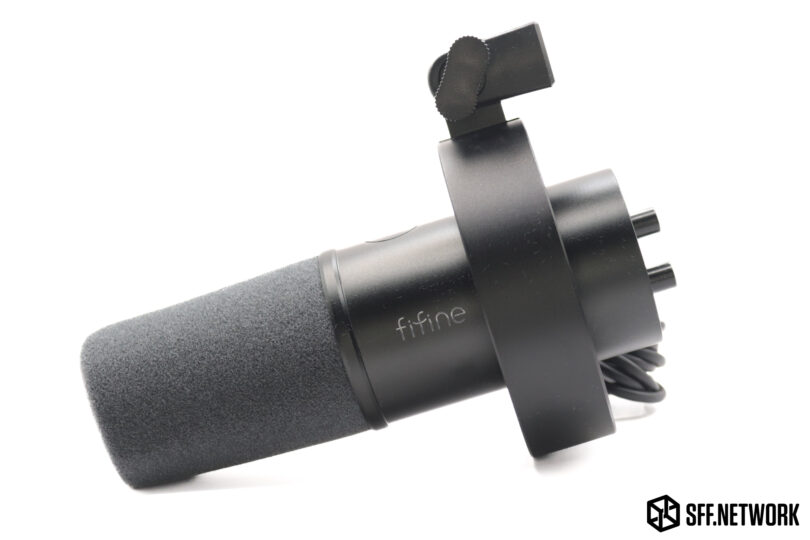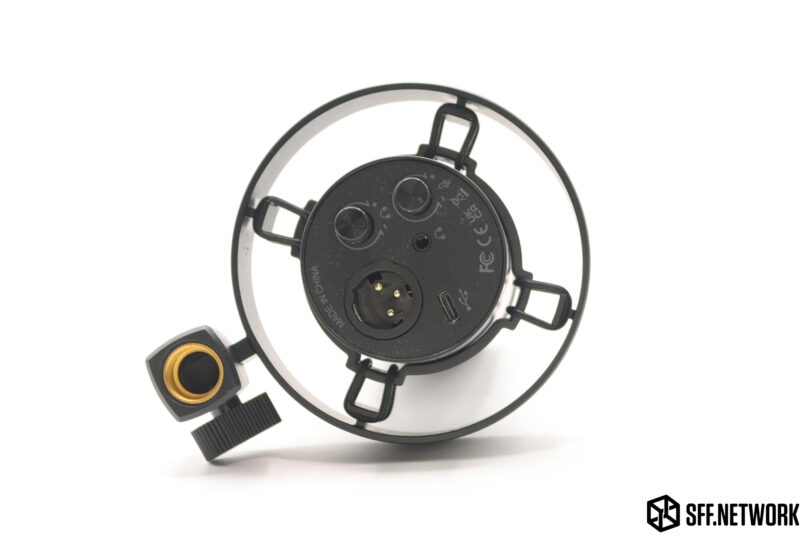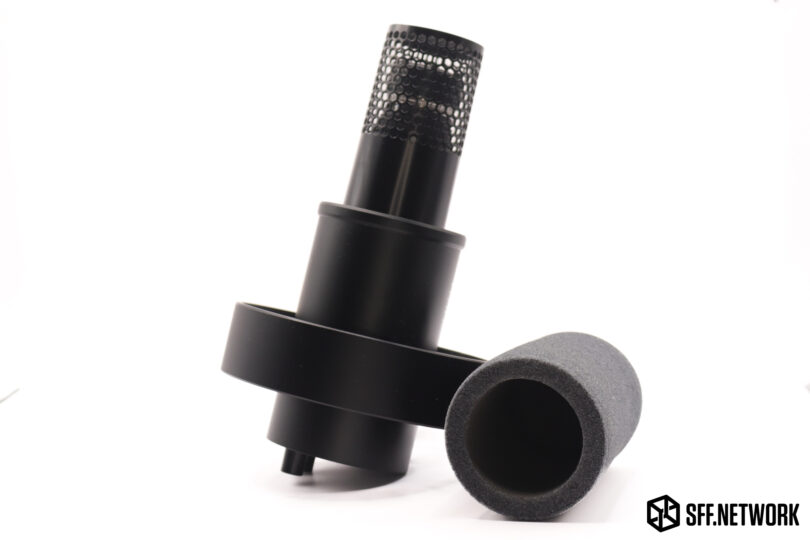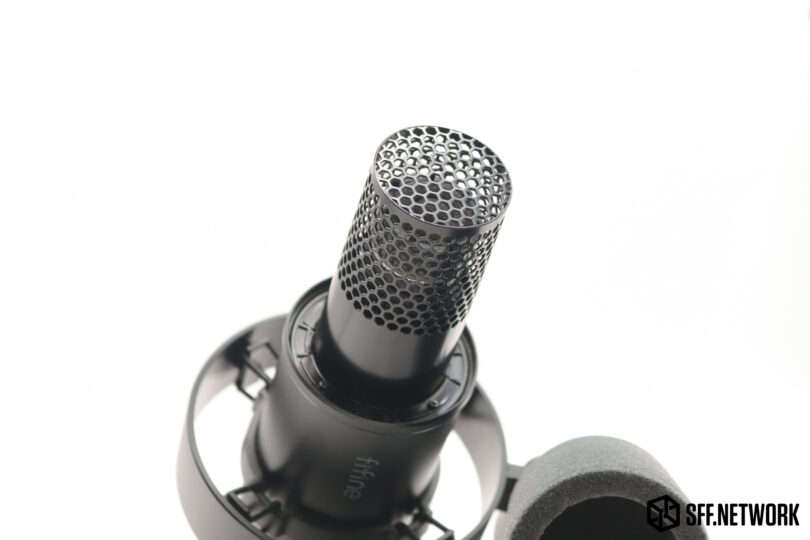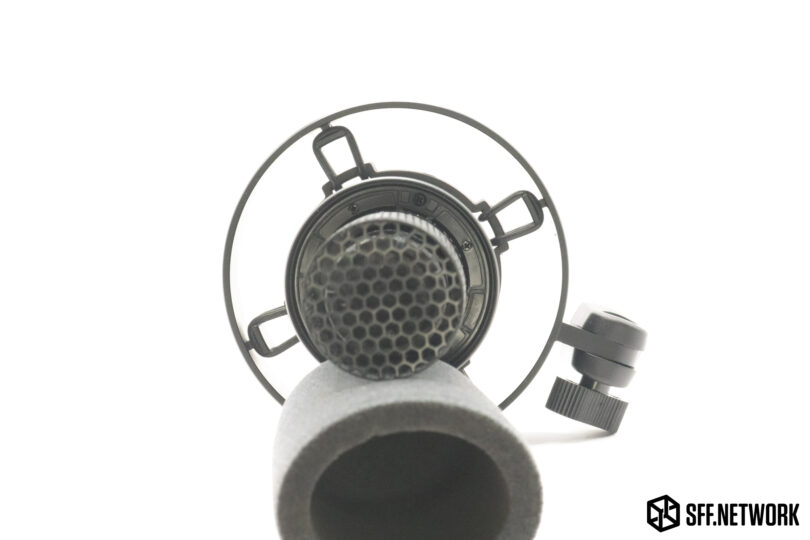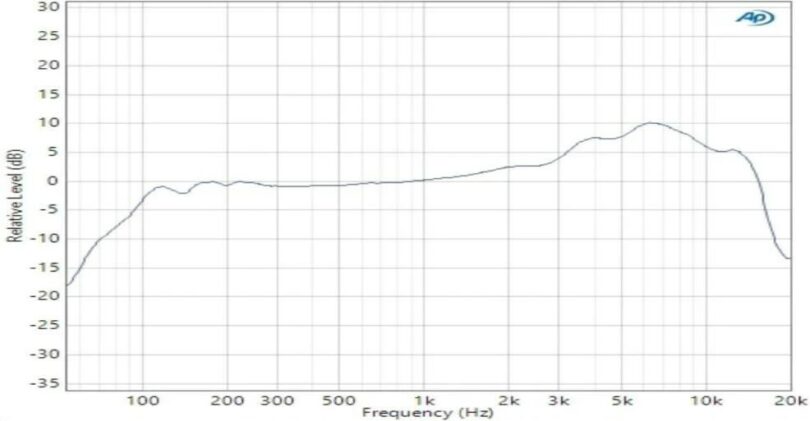Many thanks to FIFINE for supplying SFF Network with this review sample.
Unless you’re interested in hiding behind captions, being a streamer or video content creator means having a good quality microphone is a must. While fantastic videos have been created with nothing better than the dinky little microphone in a smartphone, quality audio is a lot easier to achieve with a better starting point.
FIFINE’s K688 USB/XLR Dynamic Podcast Microphone is one contender in the more budget friendly end of the market. Featuring support for both USB and XLR, it’s a multi-purpose unit, especially when you consider smartphone, Playstation and (with the right adapter) Xbox compatibility alongside the expected PC use. Retailing at US$99.95 on NewEgg or US$79.99 direct from FIFINE, the K688 sits in what I’d consider middle of the pack for pricing – below the production grade units, but above the budget offerings and ones included in gaming headsets.
Let’s see what the K688 has to offer!
Specifications
Specifications are replicated from FIFINE’s product page: https://fifinemicrophone.com/products/fifine-k688
| Type | Dynamic |
|---|---|
| Polar Pattern | Cardioid |
| Output Connection | USB type-C (mic end) to type-A 2.0 (computer end)/XLR |
| USB Power Consumption | Voltage: 5±0.25 V Current: 86 mA |
| Bit Depth/Sample Rate | 16-bit/44.1k-48k Hz |
| Frequency Response | 70-15k Hz |
| S/N Ratio | >75 dB |
| Max. SPL | 130 dB |
| Sensitivity | -58±3dB |
| Adjustable Gain Range | 0 to +12 dB |
| Shipping Weight | 1.0 kg |
Pricing
NewEgg prices at time of writing, excluding promotions. Note: each product may be cheaper from other sources – the K688 is US$79.99 direct from their website, for example.
| Product | FIFINE K688 | Blue Snowball iCE | MSI Immerse GV60 | HyperX Quadcast | Blue Yeti | Razer Seiren Elite |
| Price | US$99.95 | US$47.99 | US$99.99 | US$109.89 | US$129.99 | US$199.99 |
| USB | Yes | Yes | Yes | Yes | Yes | Yes |
| 3.5mm monitoring | Yes | No | Yes | Yes | Yes | Yes |
| XLR | Yes | No | No | No | No | No |
| Vibration Mount | Yes | No | No | Yes | No ** | No |
| Stand | No | Yes | Yes | Yes | Yes | Yes |
| Cardioid Mode* | Yes | Yes | Yes | Yes | Yes | Yes |
| Omni Mode* | No | No | Yes | Yes | Yes | No |
| Figure 8/ Bidirectional Mode* | No | No | Yes | Yes | Yes | No |
| Stereo Mode* | No | No | Yes | Yes | Yes | No |
| Gain Control | Yes | No | Yes | Yes | Yes | Yes |
| Monitoring Volume Control | Yes | No | Yes | No | Yes | Yes |
| Mute Button | Yes – Touch | No | Yes – Button | Yes – Touch | Yes – Button | Yes – Button |
*As per the venerable Blue Yeti’s spec sheet
**Internal shockmount listed on spec sheet
Comparing microphones in this price segment is an interesting proposition. Some, like the K688, include vibration dampening mounts, some include various pickup patterns, amongst many different features to compare. Basically, you have to pick the features that you prioritise, and select your microphone from there.
Unboxing
The FIFINE K688 comes in a black and red glossy box. Unfortunately my example got a little squished in transit. Let’s hope the microphone survived the trip from China! Connectivity is the name of the game on the front of the box – with logos denoting the USB-C and XLR connectors available.
More squishness.
Let’s open it up and see if there’s any damage. Nothing so far! First up, a user manual.
Under the layer of foam lies the microphone itself, and the accessories. Phew, looks like it all survived the trip. Unfortunately, this foam is of the difficult to recycle type – we much prefer more environmentally conscious packing materials!
The accessory kit includes two items – a 3/8″ to 5/8″ boom arm adapter (very handy!) and a super long – 2.5M – USB Type-A to Type-C cable are included. The cable feels like great quality – and better than the fast charging cable included with my Redmi phone!
The manual is very thorough. This thing is huge, around A3 in size, double sided and all in English. FIFINE doesn’t have a copy of this on their website, just a few FAQ’s. I’ve scanned the manual and have uploaded them below, if you’re so inclined.
The FIFINE K688 USB/XLR Dynamic Microphone. Without an included stand, it’s not easy to get a nice level product shot, but hey, this’ll do. The FIFINE K288 is an entirely monochromatic unit, no fancy RGB lighting to be seen. The K688 is built with a boom arm stand built in to the anti-vibration mount – no built in desk stand here.
The aforementioned anti-vibration mount forms a complete ring around the K688, with a quartet of rubber bands forming the isolation media. The outer ring is made from metal, adding to the quality feel. Looking to the base of the microphone, we can see a pair of control knobs, an XLR output, 3.5mm monitoring output and a USB Type-C port.
XLR? What’s that? XLR is a somewhat more professional connection standard than USB, forming the basis for many studio and live show audio setups. Specifically in this instance, the K688 uses an XLR3 connection. This is considered an industry standard for balanced audio connections, touting a lower noise floor (with a quality cable). To use the K688, you need to also source a suitable cable and pre-amp (and/or ADC) as these are not included with the microphone.
The pair of control knobs are smooth, with no knurling. Greasy hands need not apply. The first control takes care of the headphone monitor output – this only applies when the microphone is being used with USB (not XLR). The second control is the gain (or microphone output power) control. Start off low and wind it up till you get the output volume you need – rather than cranking it up in software.
The final port is a standard 3.5mm jack for monitoring, as well as using the microphone as a DAC. Fifine rates this output as being able to support headphones with impedance between 16 to 75 Ohm, so most of the regular market is covered. However, many “audiophile” (ugh) headphones fall outside this range, so beware.
Removing the foam filter is as easy as a gentle pull. The filter feels like a quality foam, and oddly satisfying to squish. If I could get a mattress topped with this foam, I think I’d experience sleep that would heal my middle-aged back!
Within the inner guard lies the microphone module, in a definite upwards facing orientation. Unlike the Blue Yeti, this microphone is designed for you to speak (or sing!) into the end, rather than the side.
FIFINE supplies the above frequency response curve on their product page. Whilst this should be taken with a grain of salt, as with any manufacturer supplied data, it does hit at a mostly flat response curve. We do not have the budget to test this for ourselves, however, some basic aural testing should suffice.
Testing and Results
I’ll be testing the K688 against my usual Blue Yeti microphone, as that’s a well known and popular podcasting microphone. For each test, I have them attached to the boom arm I have mounted on my desk. I’ve taken the liberty of also testing both with and without my pop filter – a basic unit supplied with the arm.
I connected both the FIFINE K688 and the Blue Yeti via USB to my PC. The Blue Yeti was set to cardioid mode to best replicate the K688’s microphone configuration. In the final test (the Audacity file), the Blue Yeti was mounted on the boom, and the K688 was held by the mount in hand. The significant weight difference between the K688 and Yeti was responsible for this choice! (My boom arm is also much happier with the K688 than the Yeti).
Keep in mind that I suffer from mild tinnitus and mild industrial deafness, so my personal audio opinions may not replicate yours. My voice is also of the Kiwi variety, so I sit in a different part of the frequency range than some other accents.
I’ve recorded the intro to this article four times, as below;
FIFINE K688 with pop filter
Blue Yeti with pop filter
FIFINE K688 without pop filter
Blue Yeti without pop filter
And here lies an Audacity project with both recorded at once for your perusal.
The FIFINE at maximum gain is about as loud as the Blue Yeti at 20% gain. Not fantastic, as this means going any louder necessitates either hardware or software amplification. From A/B listening of this file, I feel as though the FIFINE has a warmer tone, as if recording in an aurally better environment, rather than my bedroom! Noise rejection between the two seems about the same, as I am unable to discern any noise in the background of my recordings.
Conclusion
The FIFINE K688 is a well built, solid microphone. Whilst lacking in features versus some members of the competitive market, what it does have, it does well. Build quality is fantastic, even surviving the squishening (transit from China to Aotearoa New Zealand) with ease. The touch mute button is so much better (in my opinion) than the clicky buttons on other products. I’m sure some mute button clicks were audible in SFFNetwork’s LowVolu.me podcast, back when we podcasted! (One day we will return. One day..)
The included cable and mounting adapter are very nice to have. The inclusion of XLR is a great feature, and I’m actively looking at XLR stuff to take my son and daughter’s music recording to the next level. I did ask my daughter to perform a couple of singing tests with the K688, but, alas, she declined.
Aurally, I’m super happy with the FIFINE K688’s sound. Unfortunately, the audio output is a little quiet compared to the Blue Yeti.
My opinion of the K688 is really dependent on pricing. At the NewEgg price, I’d rather pay a little extra for the Yeti or similar. However, it is normally priced at US$79.99 on FIFINE’s website, and at that price it’s a fantastic value. At FIFINE’s price, the K688 is:
Also, the K688 is actually on special on FIFINE’s website at time of publishing, at US$64.99 if shipped to the USA. If shipped to Canada or the UK, a 10% discount code can still be used – “FifineMic10”. Interestingly, the 10% code also works for USA based purchasers, taking the microphone’s price down to US$58.50!
Small Form Factor Network is determined to help support and grow the SFF community by creating a great place for designers and users to work on their SFF projects. It’s currently owned and operated by passionate and dedicated volunteers, and often at a loss of time and money. Please consider showing your support by visiting our merch store, becoming a subscribing member, or even just telling a friend about us. Thank you for your support!

